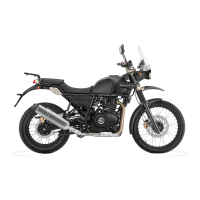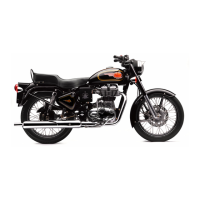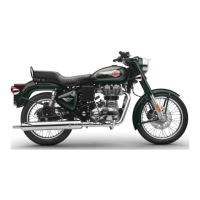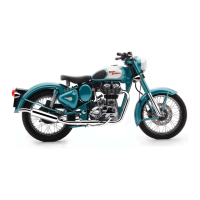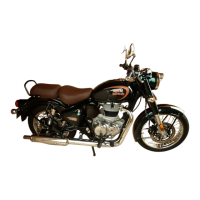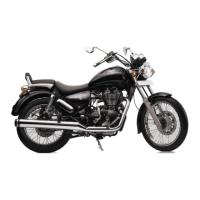1. Description
The telescopic fork consists of two legs
each of which comprises a main tube of
chrome molybdenum alloy steel tubing
which is securely clamped to the facia panel
fork head at the upper end and to the fork
crown. Filled over the lower end of the main
tube is the bottom tube made of steel tubing
with a forged steel fork end flash-welded to
it.* Fitted on the lower end of the main tube
is a bronze bush which is a close fit in the
bore of the bottom tube. The upper end of
the bottom tube carries a bronze bush which
is a close fit over the outside diameter of the
main tube. The bush is secured to the bottom
tube by means of a gland nut with an oil seal
fitted inside it. A stud, known as the "spring
stud," is fitted in the lower end of the bottom
tube and a valve port is secured to the lower
end of the main tube. As the fork operates
oil is forced through the annular space
between the bore of the valve port and the
outside diameter of the "spring stud," which
is formed with a double taper. Thus
hydraulic damping is provided which is light
at the normal position of the fork and
becomes increasingly effective towards each
end of the fork's travel. A compression
spring is fitted inside the main tube and is
secured by scrolls so that it is in tension on
the rebound. The lower end of the main tube
and upper end of the bottom tube are
protected by a cover tube screwed to the
fork crown. The upper end of the main tube
is covered by a tube with a pressed steel
lamp bracket welded to it.
The fork is filled with a light oil (S.A.E.
20) up to a level above the valve port, this
oil providing both the damping medium
and the lubricant for the bearings.
A special version of the fork is available
for sidecar use. This has a modified fork
head and fork crown setting the main tubes
1.1/2 in. further forward, thus giving less
trail and providing lighter steering when
used with a sidecar. These sidecar forks also
are fitted with a steering damper and have
stronger springs.
*On early models the fork end was made
of aluminium alloy screwed on to the
bottom tube.
2. Dismantling Fork to Replace Spring,
Oil Seal or Bearing Bushes
Place the machine on the stand and in
the case of Model "G" or "J2" place a box
beneath the crankcase to raise the front
wheel from the ground. Disconnect the
front brake control and remove the front
wheel and mudguard complete with stays.
Unscrew the oil level plug after placing a
tray to catch any oil which may run out.
Undo the nut which secures the spring stud
to the fork end and knock the spring stud
upwards into the fork with a soft mallet,
thus allowing the remainder of the oil to
escape.
Unscrew the outer cover tube using the
hand grips E4912 thus exposing the gland
nut which can be unscrewed with the hand
grips E5417 using a bar through the
bracket for the wheel spindle to prevent the
bottom tube from turning. The bottom tube
can now be withdrawn completely from the
main tube leaving the bottom tube bush, oil
seal and gland nut on the main tube.
Now unscrew the main tube valve port
using "C" spanner E5418. The spring stud
and spring can now be withdrawn from the
lower end of the main tube.
The bronze main tube bush can be now
tapped off the lower end of the tube using
the bottom tube bush for this purpose. The
bottom tube bush, oil seal and gland nut
can then be withdrawn.
3. Spring
The original length of the spring is 19 in.
overall. A new spring should be fitted if the
old one has set by more than 1 inch.
4. Steering Head Races
The steering head bearing consists of
two deep groove thrust races each
containing 19 x 1/4” diameter steel balls.
The steering head bearing is adjusted by
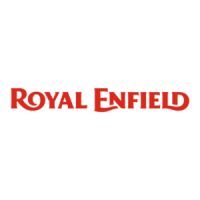
